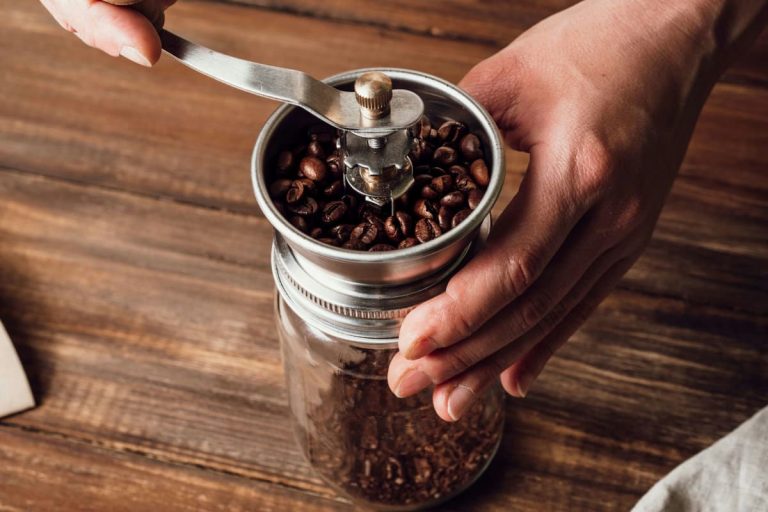 Skip to content
Skip to content

To fully grasp the impact of grinding on coffee quality, it’s crucial to understand the main grinding techniques available. Coffee grinders are divided into two main categories: blade grinders and burr grinders. Each type plays a specific role in the grinding process and influences the final quality of the product. Blade grinders, often seen as an economical and accessible option, work by using a pair of blades spinning at high speed to chop the coffee beans. This type of grinder has the advantage of being fast and convenient. However, a major limitation of blade grinders is their inability to produce a uniform grind. The coffee particles obtained often vary in size, which can lead to uneven extraction when water passes through the ground coffee. Burr grinders are further divided into two categories: flat burr grinders and conical burr grinders. Flat burr grinders consist of two discs with grinding surfaces. By adjusting the spacing between the two discs, the grind size is controlled. Conical burr grinders, on the other hand, use a cone-shaped burr that rotates against a ring-shaped burr. This type of grinder often has the advantage of producing a more uniform grind and generating less heat, which is beneficial for preserving the aromatic oils of the coffee beans. Manual grinders, often equipped with conical burrs, provide an alternative for those who want precise control over the grind without investing in expensive equipment. Nonetheless, manual grinding can be time-consuming and requires significant physical effort. Finally, industrial coffee grinders are used in large-scale coffee production chains. These grinders, designed to process vast quantities of beans multiple times a day, are generally burr grinders designed for optimal performance and increased durability. In conclusion, each grinding technique has its own advantages and disadvantages. The choice of grinder will largely depend on your specific needs and coffee preparation preferences.
Grind size plays a crucial role in coffee extraction. In simple terms, extraction is the process by which hot water dissolves the soluble compounds in ground coffee to create the drink we all know. The size of the coffee particles influences the speed and efficiency of this process. Fine particles offer a large surface area for water, facilitating rapid extraction. This is the case for espresso, where a fine grind is needed to allow water under high pressure to quickly pass through the coffee while extracting a maximum amount of flavors. However, too fine a grind can lead to over-extraction, making the coffee bitter and astringent. Conversely, a coarse grind is used for slower brewing methods like the French press or drip coffee. Larger particles have a smaller surface area, slowing down the extraction process. This slowness allows for a smoother, more controlled dissolution of soluble compounds. On the other hand, too coarse a grind risks under-extracting the coffee, resulting in a watery and flavorless brew. Intermediate preparation methods, such as the AeroPress or Chemex, require a medium grind size. These methods allow a balance between complex aromas and sufficient extraction without risking excessive bitterness. It’s important to note that grind uniformity is just as crucial as particle size. A uniform grind allows for homogeneous extraction, ensuring each coffee particle is extracted similarly. Uneven particles can lead to irregular extraction, with some particles over-extracted and others under-extracted, resulting in unbalanced-tasting coffee. Precise adjustment of grind size can optimize extraction and significantly improve the quality of the final cup. Experimenting with different grinds and adjusting according to the preparation method allows you to find the perfect balance that reveals the best aromas and flavors of each type of coffee bean. Therefore, mastering grind size is an essential skill for any coffee enthusiast eager to improve their brewing technique.
Grind quality directly influences the taste and aroma of coffee. This correlation is essential to understand for anyone interested in improving the quality of their daily beverage. Consistency and uniformity of ground coffee are decisive factors that contribute to the effective extraction of the soluble components of coffee beans responsible for complex aromas and nuanced flavors. Poor quality ground coffee, often from blade grinders or worn-out grinders, produces an uneven grind with fine particles mixed with coarse ones. This inconsistency in particle size leads to uneven extraction. Fine particles undergo over-extraction, releasing bitter and astringent compounds, while coarse particles remain under-extracted, releasing little flavor. Consequently, the resulting coffee often has an unpleasant taste with a compromised balance. Conversely, a uniform grind, typically achieved from quality grinders, allows for homogeneous extraction. When a grind is regular, each coffee particle contacts the water similarly, enabling synchronized volatilization of oils and aromas. This results in a balanced flavor profile, highlighting the subtleties of floral, fruity, or chocolate notes in the coffee. The type of grinder used also plays a crucial role in preserving aromas. Burr grinders, which generate less heat and friction than blade grinders, minimize the risk of burning coffee beans, thereby preventing the degradation of volatile aromatic compounds. Preserving these compounds is essential for obtaining a cup of coffee rich in aromas and flavors. Another essential consideration is the regularity of the grind. Even with a quality grinder, it’s crucial to maintain clean and functional equipment. Coffee residues and rancid oils can tarnish the grind and corrupt the taste of freshly ground coffee. Regular maintenance of the grinder ensures that aromas remain pure and uncontaminated by residual oils or particles. Coffee lovers and experienced baristas know that grind quality disproportionately impacts the final quality of the drink. Investing in a good grinder and mastering the grinding technique leads directly to a rewarding coffee experience with fully expressed aromas and flavors. In conclusion, emphasizing grind quality is an essential step for anyone seeking to perfect the art of coffee preparation.